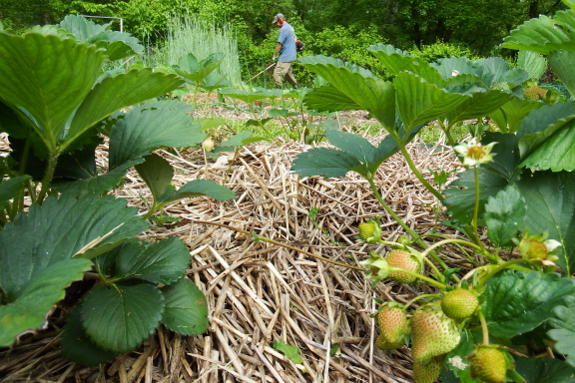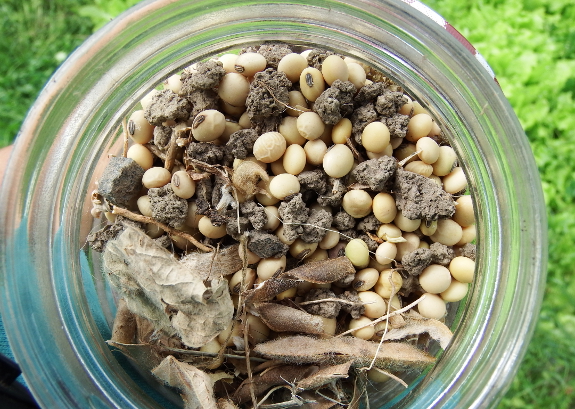
Transitioning to summer cover crops

Despite all of the recent
talk about goats, I've been spending most of my outdoor time this month
in the garden. I've planted, weeded, mulched...and got our cover crops
in order.
If you have overwintering grain cover crops (like oats, rye, and barley), now's the time to keep an eye out for the stamens that mean your plants are in full bloom.
Cutting close to the ground at bloom time kills the grains, then you
can plant veggies into the stubble after letting the roots decay for a
couple of weeks. In the meantime, gather up the tops and use them as a
mulch elsewhere...just be aware that the stems dry down much smaller
than you'd expect, so a layer of wet newspaper underneath is a good
idea.

What type of cover crop
do I recommend using to fill in the summer gaps? Buckwheat is my
all-time favorite for fallow areas that you want to put back into
production in another month or so. But last year I fell in love with
soybeans...so much so that I harvested about half a gallon of seeds
to fill this year's garden gaps. Soybeans are a slower crop than
buckwheat and produce less biomass, but they fix nitrogen out of the air
and provide partial fertility for the succeeding crop. As a result, I'm
focusing my soybean plantings in areas where I want to grow fall
brassicas and in new beds that need some nitrogen top-up before being
used for an edible crop.
For more tips on keeping nutrients cycling and organic matter burgeoning with cover crops, check out my primer Homegrown Humus.
I focus on the species that are so easy to grow nobody can mess them
up...and many attract pollinators or make food for you in the process.
How could you go wrong?
Want more in-depth information? Browse through our books.
Or explore more posts by date or by subject.
About us: Anna Hess and Mark Hamilton spent over a decade living self-sufficiently in the mountains of Virginia before moving north to start over from scratch in the foothills of Ohio. They've experimented with permaculture, no-till gardening, trailersteading, home-based microbusinesses and much more, writing about their adventures in both blogs and books.
Want to be notified when new comments are posted on this page? Click on the RSS button after you add a comment to subscribe to the comment feed, or simply check the box beside "email replies to me" while writing your comment.

If you're new to soy beans, you'll like them I think. They do an amazing job of loosening the soil with their root structure. Farmers here who break new ground (or begin 're-faring' CRP land) often plant soy beans for one or two years to condition and fortify the soil.
FYI, I get my soy beans from my farmer. He cleans out his planters at the end of the season and can't use the left overs for the next year. So, I'm his 'seed dump.' If GMO is a problem please be careful as most farmers use GMO beans in the fields. You can, of course, grow your own!